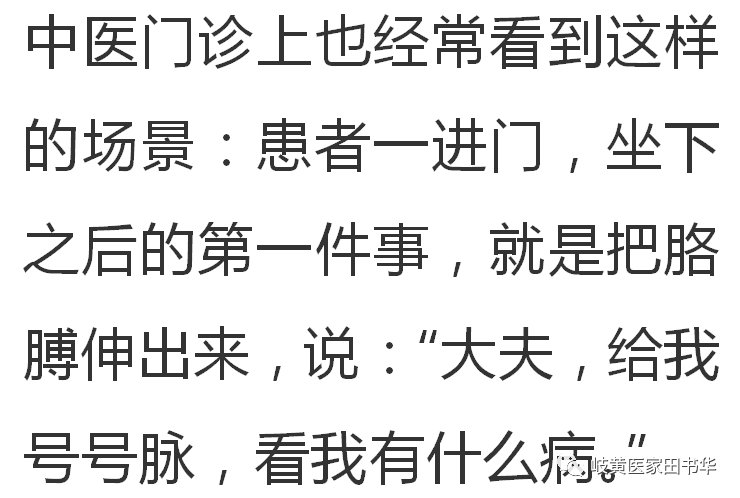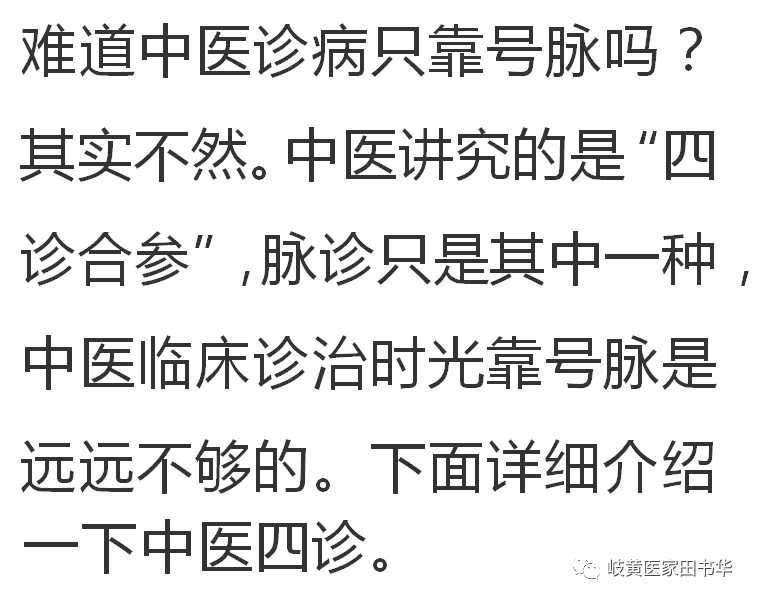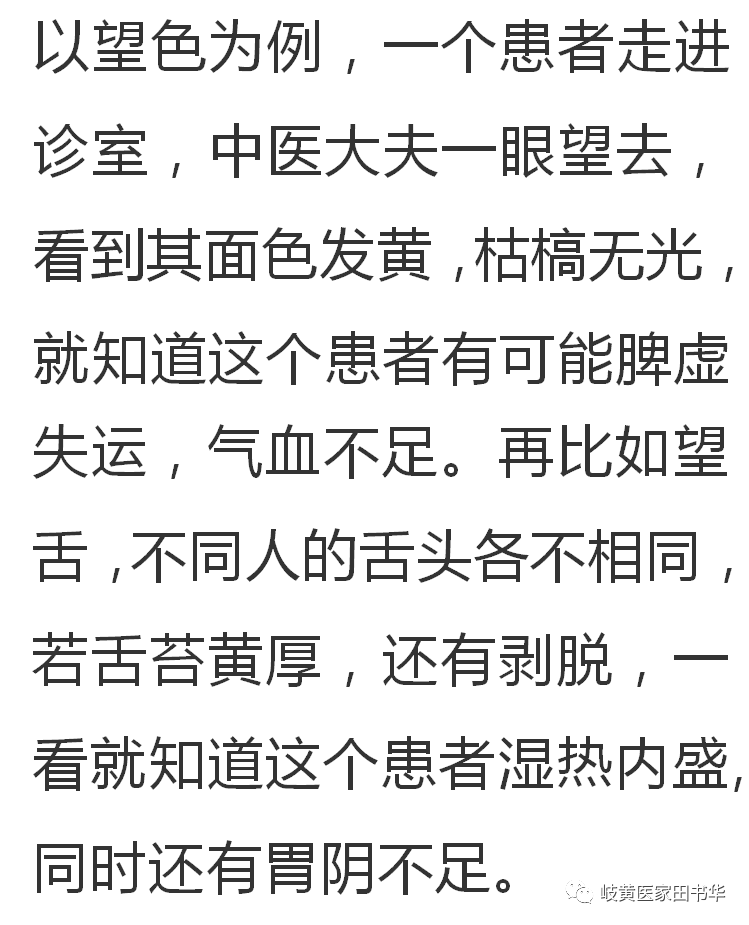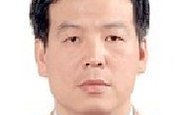



The so-called Four Diagnostic Methods in Traditional Chinese Medicine (TCM) refer to Wang (Observation), Wen (Listening), Wen (Inquiry), and Qie (Palpation). These methods were proposed by the ancient Chinese physician Bian Que based on the experiences of his predecessors. At that time, Bian Que referred to them as “observing color, listening to sound, writing images, and feeling the pulse.” The earliest existing theoretical work in TCM, the Huangdi Neijing (Yellow Emperor’s Inner Canon), states: “What is the diagnostic method… by feeling the pulse, observing the essence and brightness, examining the five colors, observing the excess and deficiency of the five organs, the strength and weakness of the six fu organs, and the condition of the body, to determine the difference between life and death.” This shows that diagnostic methods are a comprehensive approach to examining the human body to assess health and disease status. The Four Diagnostic Methods in TCM have been used to this day and are an important basis for diagnosing diseases and differentiating treatment.
Wang (Observation)
Wang (Observation) literally means to look with the eyes, including observing the body shape, mental state, complexion, tongue, and excretions, to understand the patient’s condition. Long-term practice in TCM has proven that there is a close relationship between the external body and the internal organs, especially the face and tongue. Therefore, by observing the external appearance, one can understand the overall pathological changes, as stated in the Huangdi Neijing: “By observing the external, one can know the internal, thus understanding the disease.” Observing the whole body includes four aspects: observing spirit, color, shape, and state. Observing local conditions includes observing the head and face, five senses, neck, body, limbs, and skin. Observing the tongue includes observing the tongue’s quality and coating, while observing excretions includes observing secretions, vomit, and excretions. Additionally, pediatrics has a specialized diagnostic method, which is to observe the child’s index finger pulse.

Wang (Observation) mnemonic:
When seeing a patient, observation comes first.
Vital energy and spirit are the most important.
Remember the positions of the organs.
Distinguish multiple shadows clearly.
Diseases are manifold, arising from qi and blood.
Blue complexion indicates cold pain.
Bright complexion indicates sufficient qi and blood.
Red complexion indicates heat.
Red like makeup indicates false heat.
Black complexion indicates liver and kidney issues.
White complexion indicates deficiency and cold.
White without luster indicates blood deficiency.
Yellow complexion indicates damp-heat.
Dark yellow complexion indicates liver and kidney disease.
Bright forehead indicates good spirit.
Dark forehead indicates disaster.
Bright eyes indicate no major illness.
Dull eyes indicate deficiency of vital energy.
Red eyes indicate internal heat.
Yellow sclera indicates liver and gallbladder disease.
Missing iris indicates brain disease.
Large stomach ring indicates poisoning.
Black vertical lines indicate inflammation.
Black depressions indicate structural damage.
Itchy dermatitis indicates gray around the iris.
Hard blood vessels indicate white circular rings.
Observing the iris is a significant study.
Concentric circles are key.
Multiple segments form a ring.
Each ring represents the whole body.
Eyes are like fish, bright and clear.
Shiny nose indicates no major illness.
Blue nose indicates cold injury.
White nose indicates blood injury.
Irregular nose indicates severe illness.
Freckles on the nose indicate serious illness.
Bright philtrum indicates no major illness.
Full tear hall indicates good health.
Dark blue and dry indicates kidney deficiency.
Insomnia indicates damage to the spirit.
Flat grooves indicate lack of strength.
Philtrum ulcers indicate stomach fire.
Crooked philtrum indicates short life.
Pale lips indicate no major illness.
White lips indicate blood injury.
Blue-purple lips indicate cold pain and stasis.
Bright face indicates water accumulation.
Yellow-black face indicates fatty liver.
Burnt ears indicate cancer risk.
Thin face indicates caution.
If there is no illness, one must gain weight.
Clear features from ten steps away indicate longevity.
No major illness indicates longevity.
Clear features indicate clear colors.
Understanding colors can ensure safety.
In spring, summer, autumn, and winter, the colors blue, red, white, black, and yellow are appropriate.
Left corresponds to the liver, right to the lung, heart to the forehead, kidney to the jaw, and spleen to the nose.
The five organs correspond to the five orifices, producing auspicious and ominous signs at the right time.
The liver opens to the eyes, the heart to the tongue, the lung to the nose, the kidney to the ears, and the spleen to the mouth.
Colors that are dry and dull indicate new and old conditions, while a faint yellow indicates recovery.
Song of Diagnosis through Wang (Observation)
Kidney deficiency shows black around the eyes, lung heat shows red at the tip, liver excess shows red eyes, cold shows dark cheeks;
Wind shows blue eyes, phlegm shows yellow eyes, excessive phlegm shows swollen eyes, cold shows blue lips;
Kidney failure shows black ears, dampness shows yellow skin, liver heat shows dry skin, blood heat shows red cheeks;
Mixed colors show dark eyes, blood loss shows dark complexion, diarrhea shows yellow-white face, black-blue shows danger;
Qi deficiency shows yellow swollen face, excessive sweating shows blue lips, pain shows furrowed brows, heat shows dark forehead;
Dark forehead needs water, white lips should not taste cold, red cheeks clear liver and lung, excess needs to remove phlegm;
Thin people have excess liver fire, weak people need to prevent qi deficiency, choking indicates food obstruction, cold indicates stomach cold;
Diarrhea shows yellow-white face, abdominal pain shows white face and lips, black-blue indicates danger, round eyes indicate madness;
Like a crane indicates tuberculosis, like fire indicates bone steaming, ghostly blue indicates extreme hunger, blue around the mouth indicates cold;
Poisoning shows white around the mouth, red indicates blood loss, yellow face indicates blood in the intestines, deep eyes indicate eye disease;
Ugly nose indicates instability, black spots indicate hemorrhoids, three bends on the nose indicate severe illness;
Thick needles and locks indicate middle jiao disease, three bends on the nose indicate severe illness;
Phlegm shows bright face, tight waist indicates tuberculosis, all diseases should be treated with caution, dark nose and ears indicate impending death;
Immortal leaves a secret, do not show it to the world.
Wen (Listening)
Wen (Listening) includes listening to sounds and smelling odors, using these two methods to understand health status and diagnose diseases. Listening to sounds refers to examining the patient’s breathing, coughing, vomiting, sneezing, bowel sounds, and other noises. Smelling odors refers to detecting various smells emitted from the patient’s body, secretions, and excretions. Various sounds and odors from the body reflect the physiological activities and pathological changes of the internal organs, indicating their physiological and pathological states. For example, if a patient has a heavy, muddy cough, it often indicates a real condition, caused by cold phlegm and dampness accumulating in the lungs, leading to a failure of the lungs to disperse and descend. Another example is the smell in the sickroom; if one enters and smells a rotten apple-like odor, it is often seen in severe diabetes.
Wen (Listening) mnemonic:
Anger in the liver shows in the voice, joy in the heart shows in laughter.
Worry in the spleen shows in song, fear in the kidney shows in moaning.
Speech’s roughness, fineness, strength, and weakness indicate yin and yang.
Footsteps convey sound, body conveys qi, vitality and decline should be carefully examined.
Detailed explanation of Wen (Listening) diagnosis
Language disorder
Delirium: Confused consciousness, nonsensical speech, loud and forceful voice—real condition due to heat disturbing the spirit.
Stuttering: Unclear consciousness, repetitive speech, intermittent and weak voice—deficiency of heart qi, scattered spirit.
Raving: Coarse speech, wild shouting, loss of rational control—mania.
Talking to oneself: Murmuring without an audience, stopping when someone appears—epilepsy, heart qi deficiency, spirit not nourished.
Speech difficulty—wind phlegm disturbing.
Coughing
Heavy, muddy cough—real condition.
Weak, low cough—deficiency condition.
Paroxysmal cough, gasping, continuous, ending with a cawing sound—whooping cough.
Coughing like a dog—diphtheria.
Dry cough without phlegm, or only a small amount of thick phlegm—dry evil invading the lungs or lung dryness due to yin deficiency.
Hiccups and belching
High-pitched, short hiccups, loud and forceful—real heat.
Low, long hiccups, weak and powerless—deficiency cold.
Chronic illness with weakened stomach qi, hiccups appear, voice low and weak—dangerous condition.
Belching with sour, rotten smell—stagnation of food or indigestion.
Belching without sour smell—disharmony of liver and stomach or stomach qi deficiency.
Wen (Inquiry)
Wen (Inquiry) is a clinical information collection method where the doctor directly communicates with the patient. It plays a crucial role in the diagnostic process. Many aspects of the disease, such as medical history and family history, can only be obtained through inquiry. Understanding these situations provides reliable evidence for the doctor to analyze the condition, determine the location of the disease, grasp its nature, and subsequently provide appropriate treatment. Especially when the patient has not yet shown objective signs and only has subjective symptoms, the doctor can only grasp the clues of the disease through inquiry to make a diagnosis. The “Ten Questions Song” in TCM summarizes the content that needs to be inquired about in great detail, and it is one of the essential mnemonics for every TCM practitioner.
Wen (Inquiry) mnemonic
First ask about cold and heat, second ask about sweating, third ask about head and body, fourth ask about bowel movements.
Fifth ask about diet, sixth ask about the chest, seventh about deafness, eighth about thirst.
Ninth ask about old illnesses, tenth ask about causes, and also consider medication changes.
Women should especially ask about menstruation and childbirth, and pediatric cases should be noted.
Birth date and time, yin and yang, and living conditions should be carefully examined.
Qie (Palpation)
Qie (Palpation) means to touch, approach, and press. Qie diagnosis is a method where the doctor uses fingers or palms to touch, feel, press, and apply pressure to certain parts of the patient to understand the condition and diagnose the disease. As one of the four diagnostic methods in TCM, Qie plays a very important role in obtaining health and disease information from the patient and gathering important differentiation data. Qie includes pressing and pulse diagnosis.
Pressing refers to the doctor examining the patient with their hands to understand whether the body parts are cold or hot, moist or dry, soft or hard, and whether there is tenderness, swelling, or other abnormal changes, thus inferring the location, nature, and severity of the disease.
Pulse diagnosis, commonly referred to as feeling the pulse, involves the doctor using fingers to press on certain superficial arteries of the patient to perceive the pulse’s characteristics, thereby understanding the body’s condition. TCM believes that the blood vessels connect the entire body, linking the internal organs and the external muscles. The heart governs the blood vessels, and the heart’s yang energy can promote the movement of qi and blood in the vessels. Therefore, the pulse can reflect comprehensive information about the functions of the internal organs, qi and blood, and yin and yang. Historically, there have been many pulse diagnosis locations, with the three most widely used being the three regions and nine pulses, the three regions method, and the cun-kou method. Currently, the most commonly used in clinical practice is the third method. Pulse diagnosis has been emphasized by many generations of TCM practitioners in long-term medical practice, and its theory and application have been continuously developed and improved, forming one of the most distinctive diagnostic methods in TCM.
Qie (Palpation) mnemonic
Left cun corresponds to the heart, right cun corresponds to the lung, both chi correspond to the kidney.
Upper, middle, and lower jiao correspond to front and back.
Distinguish between deep and superficial, consider cold and heat, and analyze slow and rapid.
Thin and weak differ from thick and strong, short and weak differ from long and strong, understanding the eight principles.
Common pulse types and their clinical significance
(1) Floating pulse: easily felt, indicates the righteous qi is at the surface resisting external pathogens; seen in chronic illness as interior deficiency, yin fails to restrain yang.
(2) Deep pulse: not easily felt, indicates pathogens are trapped inside, righteous qi is obstructed; if in a fat person or during severe winter, it is difficult to feel.
(3) Slow pulse: three beats per breath, indicates yang cannot overcome yin, qi and blood are cold; if fever is present, pulse may be slow, making diagnosis difficult.
(4) Rapid pulse: five beats per breath or more, indicates heat forcing blood circulation, internal heat; if no heat, rapid pulse indicates deficiency, requiring careful consideration.
(5) Flooding pulse: large and forceful, indicates excessive heat and strong righteous qi; flooding without root indicates floating yang.
(6) Thin pulse: thin and visible, indicates deficiency of qi and blood; also indicates dampness obstructing the interior, restricting qi and blood flow.
(7) Weak pulse: no strength when pressed, indicates deficiency of qi and blood; weak pulse indicates insufficient warmth, leading to cold hands and feet.
(8) Full pulse: large and strong, indicates both floating and deep; indicates strong righteous qi and obstruction of qi and blood.
(9) Slippery pulse: smooth and flowing, indicates internal heat, food stagnation, or phlegm; during pregnancy, indicates harmonious qi and blood.
(10) Choppy pulse: thin and slow, indicates qi stagnation, blood stasis, or food stagnation; weak indicates deficiency of essence and blood.
(11) Long pulse: extends beyond normal range, indicates internal heat and phlegm; long and smooth indicates good prognosis, indicating abundant qi and blood.
(12) Short pulse: does not reach both ends, indicates qi loss or stagnation; strong indicates food obstruction, weak indicates qi deficiency.
(13) String-like pulse: straight and long, indicates qi stagnation and pain; phlegm, dampness, and liver-gallbladder diseases may present this pulse.
(14) Tight pulse: tight and string-like, indicates cold invasion; pain due to cold should be treated with warming methods.
(15) Hollow pulse: soft and large, indicates internal emptiness; indicates yin deficiency and floating yang, leading to blood loss.
(16) Leather pulse: firm on the outside, empty on the inside, indicates cold and deficiency; indicates blood loss and insufficient qi.
(17) Firm pulse: long, strong, and hard, indicates internal cold; indicates dampness and stagnation.
(18) Slow pulse: indicates deficiency of qi and blood; indicates cold and weakness.
(19) Weak pulse: weak and soft, indicates severe deficiency of qi and blood; indicates urgent need for tonification.
(20) Scattered pulse: floating and scattered, indicates loss of vital energy; indicates impending death.
(21) Hidden pulse: deep and difficult to feel, indicates severe internal conditions; indicates danger.
(22) Rapid pulse: indicates severe illness; indicates danger.
(23) Intermittent pulse: indicates serious conditions; indicates danger.
(24) Quick pulse: indicates severe illness; indicates danger.
(25) Stopping pulse: indicates serious conditions; indicates danger.
(26) Throbbing pulse: indicates severe illness; indicates danger.
(27) Weak pulse: indicates severe deficiency; indicates danger.
(28) Floating pulse: indicates severe illness; indicates danger.
(29) Rapid pulse: indicates severe illness; indicates danger.
(30) Intermittent pulse: indicates severe illness; indicates danger.
(31) Quick pulse: indicates severe illness; indicates danger.
(32) Stopping pulse: indicates severe illness; indicates danger.
(33) Throbbing pulse: indicates severe illness; indicates danger.
(34) Weak pulse: indicates severe deficiency; indicates danger.
(35) Floating pulse: indicates severe illness; indicates danger.
(36) Rapid pulse: indicates severe illness; indicates danger.
(37) Intermittent pulse: indicates severe illness; indicates danger.
(38) Quick pulse: indicates severe illness; indicates danger.
(39) Stopping pulse: indicates severe illness; indicates danger.
(40) Throbbing pulse: indicates severe illness; indicates danger.
Wang, Wen, Wen, and Qie are the four methods of investigation and understanding diseases in TCM, each with its unique role and cannot replace one another. Diseases are complex processes, and their clinical manifestations can vary in many aspects. If only a single diagnostic method is used, it may lead to incomplete differentiation information, which in turn affects treatment. Moreover, the four diagnostic methods in TCM have mutual reference, supplementation, and verification roles. To fully understand the condition and ensure the accuracy and comprehensiveness of clinical data, all diagnostic methods must be organically combined. When observing, there should be listening; when listening, there should be inquiry; when inquiring, there should be palpation. One cannot rely solely on one diagnostic method to determine the disease. If a doctor is particularly fond of a single diagnostic method, such as palpation or observation, and has research or expertise in it, it is commendable. However, to adopt one method while neglecting the other three is not acceptable. Only by achieving “integration of the four diagnostics” and comprehensively examining the patient’s condition can a correct diagnosis be made.
Click on the article titles below to read the detailed content
1. Recent Articles Collection by TCM Practitioner Tian Shuhua 2. [Traditional Chinese Medicine and Qixi Festival] Tianma and Dihuang, Can Love Also Be Medicinal? 3. The Communist Party of China and Traditional Chinese Medicine in a Century (Illustrated) 4. A Re-examination of the Theoretical System of Traditional Chinese Medicine 5、Traditional Chinese Medicine and Clothing6、Traditional Chinese Medicine and Diet7、Traditional Chinese Medicine and Living8、Traditional Chinese Medicine and Exercise
9、Basic Knowledge of Nutrition Popularization
10、Comprehensive Knowledge of Clinical Nutrition
11、Famous People and Traditional Chinese Medicine12、What Can Medical Graduates Do? (They Can Become Politicians, Military Leaders, Financial Leaders, Writers, Medical Experts, Cultural and Entertainment Figures, etc.)13、Analysis of the Current Situation of Higher Education in Traditional Chinese Medicine 14、Introduction to Traditional Medicine in Various Countries15、Traditional Chinese Medicine (Traditional Medicine of Various Chinese Ethnic Groups: Han Medicine, Uighur Medicine, Tibetan Medicine, Mongolian Medicine, Dai Medicine, Hui Medicine, etc.)16、Historical Events of Abolishing Traditional Chinese Medicine Four Times17、Significance of Studying the Four Classic Works of Traditional Chinese Medicine18、Collection of the Four Classic Works of Traditional Chinese Medicine19、Introduction to the Four Classic Masterpieces of Traditional Chinese Medicine20、Two Major Theoretical Systems and Eight Major Schools of Traditional Chinese Medicine21、Lecture Series on the Four Basic Courses of Traditional Chinese Medicine: “Basic Theory of Traditional Chinese Medicine” 111 Complete Video Lectures *Presented by Pan Yi)22、Lecture Series on the Four Basic Courses of Traditional Chinese Medicine: “Diagnosis of Traditional Chinese Medicine” 75 Complete Video Lectures *Presented by Zhu Wenfeng)23、Lecture Series on the Four Basic Courses of Traditional Chinese Medicine: “Pharmacology of Traditional Chinese Medicine” 79 Complete Video Lectures *Presented by Zhang Tingmo)24、Lecture Series on the Four Basic Courses of Traditional Chinese Medicine: “Formulas of Traditional Chinese Medicine” 82 Complete Video Lectures *Presented by Deng Zhongjia)25、Lecture Series on the Four Classic Masterpieces of Traditional Chinese Medicine: “Huangdi Neijing” 80 Complete Video Lectures *Collector’s Edition *Presented by Wang Hongtu)26、Lecture Series on the Four Classic Masterpieces of Traditional Chinese Medicine: “Shanghan Lun” 70 Complete Video Lectures *Collector’s Edition *Presented by Hao Wanshan)27、Lecture Series on the Four Classic Masterpieces of Traditional Chinese Medicine: “Jin Gui Yao Lue” 80 Complete Video Lectures *Collector’s Edition *Presented by Wang Xuehua)28、Lecture Series on the Four Classic Masterpieces of Traditional Chinese Medicine: “Wen Bing Xue” 72 Complete Video Lectures *Collector’s Edition *Presented by Liu Jingyuan)29、Which Chinese Medicinal Materials Are Suitable for Cultivation in the North?30、Relationship Between the Properties of Chinese Medicinal Materials and Their Optimal Harvesting Period
31、Analysis Report on the Traditional Chinese Medicine Industry and Its Listed Companies (Traditional Chinese Medicine Stocks)
32、Green Finance as an Important Means of Developing a Green Economy33、Importance of Developing a Green Economy from the Dialectical Relationship Between Social Economy and Natural Environment
34、On the Relationship Between Energy and Finance
35、In-depth Analysis: Chinese Pre-Qin Philosophy as the Source of Western Economic Theory

